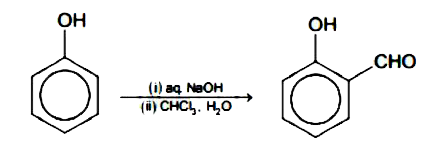What is oxidative decarboxylation ? What happens to pyruvate immediately after this reaction ? Name the enzyme involved in this reaction.
Step-by-Step Solution:
1. Definition of Oxidative Decarboxylation:
- Oxidative decarboxylation is a biochemical process where a carboxyl group is removed from a compound, resulting in the release of carbon dioxide (CO₂). This process also involves the oxidation of the compound, which means that hydrogen atoms are removed (dehydrogenation) during the reaction.
2. What Happens to Pyruvate After Oxidative Decarboxylation:
- Immediately after oxidative decarboxylation, pyruvate, which is the end product of glycolysis, is converted into Acetyl-CoA. This conversion is crucial as Acetyl-CoA then enters the citric acid cycle (Krebs cycle) for further energy production.
3. Enzyme Involved in the Reaction:
- The enzyme that catalyzes the oxidative decarboxylation of pyruvate is called the Pyruvate Dehydrogenase Complex. This enzyme complex facilitates the conversion of pyruvate into Acetyl-CoA, along with the release of carbon dioxide and the transfer of electrons.
Summary:
- Oxidative Decarboxylation: A process involving the removal of CO₂ and hydrogen from pyruvate.
- Immediate Product: Acetyl-CoA.
- Enzyme: Pyruvate Dehydrogenase Complex.
- Oxidative decarboxylation is a biochemical process where a carboxyl group is removed from a compound, resulting in the release of carbon dioxide (CO₂). This process also involves the oxidation of the compound, which means that hydrogen atoms are removed (dehydrogenation) during the reaction.
- Immediately after oxidative decarboxylation, pyruvate, which is the end product of glycolysis, is converted into Acetyl-CoA. This conversion is crucial as Acetyl-CoA then enters the citric acid cycle (Krebs cycle) for further energy production.
- The enzyme that catalyzes the oxidative decarboxylation of pyruvate is called the Pyruvate Dehydrogenase Complex. This enzyme complex facilitates the conversion of pyruvate into Acetyl-CoA, along with the release of carbon dioxide and the transfer of electrons.
- Oxidative Decarboxylation: A process involving the removal of CO₂ and hydrogen from pyruvate.
- Immediate Product: Acetyl-CoA.
- Enzyme: Pyruvate Dehydrogenase Complex.
Topper's Solved these Questions
- RESPIRATION IN PLANTS BOOK - MODERN PUBLICATIONCHAPTER - RESPIRATION IN PLANTS EXERCISE - REVISION EXERCISES (Long Answer Questions)
5 Videos
- RESPIRATION IN PLANTS BOOK - MODERN PUBLICATIONCHAPTER - RESPIRATION IN PLANTS EXERCISE - COMPETITON FILE OBJECTIVE TYPE QUESTIONS (A. MULTIPLE CHOICE QUESTIONS)
30 Videos
- RESPIRATION IN PLANTS BOOK - MODERN PUBLICATIONCHAPTER - RESPIRATION IN PLANTS EXERCISE - REVISION EXERCISES (Very Short Answer Questions)
16 Videos
- PLANT KINGDOM BOOK - MODERN PUBLICATIONCHAPTER - PLANT KINGDOM EXERCISE - Chapter Practice Test
16 Videos
- STRUCTURAL ORGANISATION IN ANIMALSBOOK - MODERN PUBLICATIONCHAPTER - STRUCTURAL ORGANISATION IN ANIMALSEXERCISE - CHAPTER PRACTICE TEST (Section -E)
2 Videos
Similar Questions
Knowledge Check
Pyruvate undergoes oxidative decarboxylation to produce ……
A2-PGABα-ketoglutarateCSuccinyl-Co-ADAcetyl Co-APyruvate undergoes oxidative decarboxylation to produce ……
A2-PGABα- KetoneCSuccinyl-Co-ADAcetyl-Co-AEnzyme helping in oxidatvie decarboxylation of pyruvic acid is
APyruvic KinaseBPyruvic dehydrogenaseCMalate dehydrogenaseDSuccinic dehydrogenase.
What is meant by decarboxylation ? How can meth-ane be parepared by using this reaction ?
View SolutionOxidative decarboxylation occurs during the reaction
View Solution
What is the intermediate involved in the above reaction ?
View SolutionWhat happens when the temperature of a reaction increases?
View SolutionThe coenzyme involved in oxidative decarboxylation is
View Solution
